QUOTE OF THE WEEK
Nothing Found
It seems we can’t find what you’re looking for. Perhaps searching can help.
LANL’s Central Mission: Los Alamos Lab officials have recently claimed that LANL has moved away from primarily nuclear weapons to “national security”, but what truly remains as the Labs central mission? Here’s the answer from one of its own documents:
LANL’s “Central Mission”- Presented at: RPI Nuclear Data 2011 Symposium for Criticality Safety and Reactor Applications (PDF) 4/27/11
Banner displaying “Nuclear Weapons Are Now Illegal” at the entrance in front of the Los Alamos National Lab to celebrate the Entry Into Force of the Nuclear Weapon Ban Treaty on January 22, 2021
Nothing Found
It seems we can’t find what you’re looking for. Perhaps searching can help.
Follow the Money!
Map of “Nuclear New Mexico”
In 1985, US President Ronald Reagan and Russian President Mikhail Gorbachev declared that “a nuclear war cannot be won and must never be fought.”

Waste Lands: America’s Forgotten Nuclear Legacy
The Wall St. Journal has compiled a searchable database of contaminated sites across the US. (view)
Related WSJ report: https://www.wsj.com
NEW & UPDATED
Comment on the Lawrence Livermore National Laboratory Draft Site-Wide Environmental Impact Statement
Nuclear Watch New Mexico January 21, 2023 | Email
Via email to: LLNLSWEIS@nnsa.doe.gov
Ms. Fana Gebeyehu-Houston,
LLNL SWEIS Document Manager,
1000 Independence Ave., SW, Washington, DC 20585
Dear Ms. Fana Gebeyehu-Houston:
Thank you for the opportunity to comment on the National Nuclear Security Administration’s (NNSA) Draft Site-Wide Environmental Impact Statement (SWEIS) for the continued operation of the Lawrence Livermore National Laboratory Main Site in Livermore, CA and Site 300 high explosives testing range near Tracy, CA.
Nuclear Watch New Mexico takes particular interest in the Livermore Lab as the sister lab of the Los Alamos National Laboratory (LANL). We have long been involved in the issue of plutonium pit production at LANL. We see the two labs as inextricably linked given that LANL will be producing plutonium pits for the new W87-1 warhead, for which LLNL is the lead design agency.
Our mission statement: Nuclear Watch New Mexico seeks to promote safety and environmental protection at nuclear facilities; mission diversification away from nuclear weapons programs; greater accountability and cleanup in the nation-wide nuclear weapons complex; and consistent U.S. leadership toward a world free of nuclear weapons.
NukeWatch DNFSB 2022 Hearing Comments 1-20-23
Nuclear Watch New Mexico January 20, 2023 | Email
Defense Nuclear Facilities Safety Board
625 Indiana Avenue NW, Suite 700
Washington, DC 20004
Via email at <hearing@dnfsb.gov>
Re: Comments concerning the November 16, 2022 public hearing regarding legacy cleanup activities, nuclear safety, and increased production activities at the Los Alamos National Laboratory
Dear Safety Board:
Nuclear Watch New Mexico (NukeWatch) appreciates the opportunity to provide follow up written comments for the November 16, 2022 public hearing in Santa Fe, NM. We want to thank the Board for its continuing concern over Los Alamos National Laboratory (LANL) safety issues and for having a public hearing to begin with. Further, we are grateful for the DNFSB’s perseverance in the face of the Department of Energy’s arguably illegal attempts to restrict its access. We look forward to many more years of the Safety Board’s insights and recommendations on nuclear facilities at DOE and NNSA sites, for which the DNFSB is uniquely positioned. Your service is invaluable and irreplaceable. Thank you!
Our mission statement: Nuclear Watch New Mexico seeks to promote safety and environmental protection at nuclear facilities; mission diversification away from nuclear weapons programs; greater accountability and cleanup in the nation-wide nuclear weapons complex; and consistent U.S. leadership toward a world free of nuclear weapons.
PLUTONIUM PIT PRODUCTION BRIEFING
Jay Coghlan, Nuclear Watch New Mexico January 17, 2023 | Email
GAO report: NNSA Does Not Have a Comprehensive Schedule or Cost Estimate for Pit Production Capability, January 12, 2023, gao.gov/products/gao-23-104661
- “NNSA’s Plutonium Pit Production Scope of Work Includes Dozens of Programs, Projects, and Other Activities Managed by Multiple NNSA Offices at Multiple Sites.” p. 19
- “NNSA Does Not Have a Comprehensive Schedule or Cost Estimate for Establishing its Pit Production Capability.” p. 40
- They [NNSA officials] said they did not want to introduce uncertainty about dates and wanted to avoid releasing preliminary or unpalatable information that was subject to change.” pp. 40-41
- “NNSA will have spent billions of dollars without having an overall idea of total program costs, or when program objectives, to include the capability to produce 80 pits per year, will be reached.” pp. 55-56
Nuclear waste project in New Mexico opposed in recent poll, company asserts local support
…Opponents, including Southwest Research – a frequent critic of Holtec and the nearby Waste Isolation Pilot Plant repository for transuranic (TRU) nuclear waste – maintained the project would bring an undue risk to New Mexicans nearby and Americans along the waste transportation routes.
“That’s why opposition was spread across political parties, gender and ethnicity,” said Nuclear Waste Program Manager Don Hancock at Southwest Research and Information Center.
The poll showed more than half of those surveyed in the region were against the project…
By Adrian Hedden, Carlsbad Current-Argus | January 14, 2023 currentargus.com
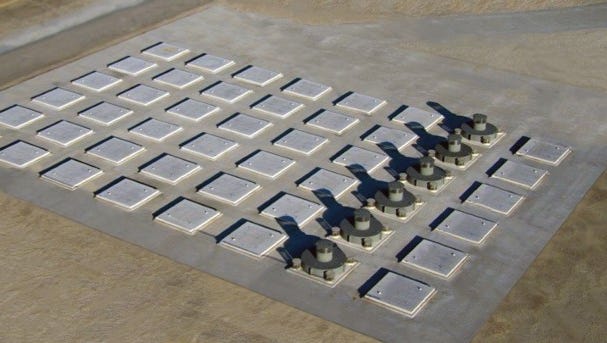
New Mexicans in every region of the state allegedly opposed storing high-level nuclear waste in their state, according to a recent poll, as a New Jersey company hoped to build a facility to do so near Carlsbad.
The poll, commissioned by Albuquerque-based Southwest Research and Information Center in a partnership with the Center for Civic Policy surveyed 1,015 voters across the state from Dec. 7 to 14.
It found 60 percent of those surveyed were in opposition to the project, with 30 percent supporting and 10 percent undecided.
Independent Government Accountability Office Releases Scathing Report on Expanding Plutonium Pit Production; Pressure Mounts on Los Alamos Lab to Increase Production
FOR IMMEDIATE RELEASE, January 12, 2023 | Jay Coghlan – 505.989.7342 | Email
Santa Fe, NM – Today, the independent Government Accountability Office (GAO) released a scathing report entitled NNSA Does Not Have a Comprehensive Schedule or Cost Estimate for Pit Production Capability. The National Nuclear Security Administration (NNSA) and its parent Department of Energy have been on the GAO’s High Risk List for project mismanagement since 1991.
Plutonium pits are the essential radioactive cores of nuclear weapons. There has been only limited production at the Los Alamos National Laboratory (LANL) since 1989 when a FBI raid investigating environmental crimes abruptly shut down production at the Rocky Flats Plant near Denver. NNSA now plans to spend $2.9 billion in FY 2023 alone to establish production of at least 30 pits per year at LANL and 50 pits per year at the Savannah River Site (SRS) in South Carolina.
The two main findings of GAO’s report are:
- NNSA’s Plutonium Pit Production Scope of Work Includes Dozens of Programs, Projects, and Other Activities Managed by Multiple NNSA Offices at Multiple Sites (p 19)
Independent Government Accountability Office Releases Scathing Report on Expanding Plutonium Pit Production; Pressure Mounts on Los Alamos Lab to Increase Production
Santa Fe, NM – Today, the independent Government Accountability Office (GAO) released a scathing report entitled NNSA Does Not Have a Comprehensive Schedule or Cost Estimate for Pit Production Capability. The National Nuclear Security Administration (NNSA) and its parent Department of Energy have been on the GAO’s High Risk List for project mismanagement since 1991.
Plutonium pits are the essential radioactive cores of nuclear weapons. There has been only limited production at the Los Alamos National Laboratory (LANL) since 1989 when a FBI raid investigating environmental crimes abruptly shut down production at the Rocky Flats Plant near Denver. NNSA now plans to spend $2.9 billion in FY 2023 alone to establish production of at least 30 pits per year at LANL and 50 pits per year at the Savannah River Site (SRS) in South Carolina.
The two main findings of GAO’s report are:
- NNSA’s Plutonium Pit Production Scope of Work Includes Dozens of Programs, Projects, and Other Activities Managed by Multiple NNSA Offices at Multiple Sites (p 19)
GAO: Cost, time estimates for making nuclear bomb cores flawed – Santa Fe New Mexican
The GAO report said the lack of detailed estimates of the costs, time and resources involved is especially glaring because this is the largest and most expensive weapons project undertaken by the National Nuclear Security Administration, the Energy Department branch that oversees the arsenal.
“Jay Coghlan, executive director of Nuclear Watch New Mexico, said an agency that boasts about having top-level technicians should have no problem supplying all the necessary information about pit production, including total costs.”
BY SCOTT WYLAND, THE SANTA FE NEW MEXICAN | January 13, 2023 santafenewmexian.com
Estimates for costs and the time required to produce nuclear bomb cores, including 30 per year at Los Alamos National Laboratory, are severely lacking and could make it difficult for federal managers to avoid cost overruns, delays and other problems, a government watchdog said in a report released Thursday.
The plan for the lab and the Savannah River Site in South Carolina to produce a combined 80 nuclear warhead triggers, or “pits,” each year by 2035 is a massive, complex undertaking that demands detailed scheduling, a careful accounting of costs and clear estimates of how long various tasks will take — none of which are being done by the federal agency in charge of nuclear weapons, the Government Accountability Office said in its 78-page report.
US nuclear agency falls short on scheduling, cost estimates
The U.S. agency in charge of jumpstarting the production of key components for the nation’s nuclear arsenal is falling short when it comes to having a comprehensive schedule for the multibillion-dollar project
“Jay Coghlan, executive director of Nuclear Watch New Mexico, pointed to some of the price tags associated with the project having doubled over the last four years. He said production overall at the two sites could cost at least $60 billion over 30 years with radioactive waste disposal and other environmental and public health concerns adding to the bill.
“Until Congress and the New Mexican delegation demand credible cost estimates and schedules, Coghlan said lawmakers “should stop rewarding the guilty with yet more money…That is simple good governance that could help slow our sleepwalk into the new and unpredictable nuclear arms race,” he said.
BY SUSAN MONTOYA BRYAN, THE ASSOCIATED PRESS – KOB, THE WASHINGTON POST, US NEWS, ABC NEWS | January 13, 2023
RE: The Santa Fe New Mexican “GAO: Cost, time estimates for making nuclear bomb cores flawed” – Underneath it All is the Nuclear Elephant in the Room: Future Pit Production is Actually Unnecessary.
BY JAY COGHLAN
Good article indeed. Kudos to Scott Wyland.
But to add to it:
The National Nuclear Security Administration (NNSA) cannot do, or rather will not do, good governance 101 for its largest program ever (i.e., expanded plutonium pit production), which is credible cost estimates and schedules. Why won’t NNSA do that? Because of PR and political concerns when their flaky cost estimates (such as they are) get blown up by inevitable escalating costs. NNSA knows that if it gave accurate projected costs Congress and the public would balk. Thus, the agency goes in lowballing costs, which always inevitably rise. I could rattle off a dozen NNSA projects over the last 15 years in which costs have exploded, wasting tens of billions of taxpayers’ dollars.
But get this, future pit production is also unnecessary and may actually degrade national security. To begin with, independent experts have found that pits have serviceable lifetimes of at least a century (their average age is now around 40). And we already have at least 15,000 existing pits stored at the Pantex Plant near Amarillo, TX.
The Results Are In! Staff at Ukraine’s Zaporizhzhia Nuclear Power Plant Recognized as 2022 Arms Control Persons of the Year – SANTA FE ARCHBISHOP JOHN C. WESTER RUNNER-UP! Thank you for voting!
ARMS CONTROL ASSOCIATION | January 13, 2023 armscontrol.org Media Contacts: Tony Fleming, director for communications, Daryl G. Kimball, executive director
(Washington, D.C.)—The Energoatom staff at Ukraine’s Zaporizhzhia nuclear power plant (ZNPP) were selected as the 2022 Arms Control Persons of the Year through an online poll that drew more than 3,500 participants from nearly 80 countries.
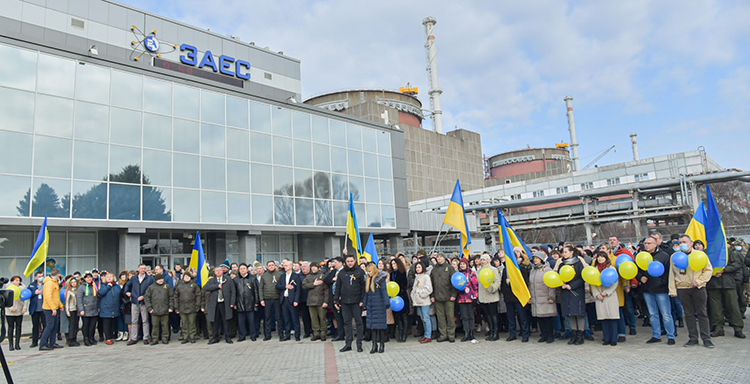
Zaporizhzhia staff gathered Feb. 16, 2022, for a day of unity celebrated by Energoatom’s employees. (Photo: Energoatom)
The annual contest is organized by the independent, nongovernmental Arms Control Association to highlight positive initiatives—some at the grassroots level, some on the international scale—designed to advance disarmament, nuclear security, nonproliferation, civilian protection, and international peace, security, and justice.
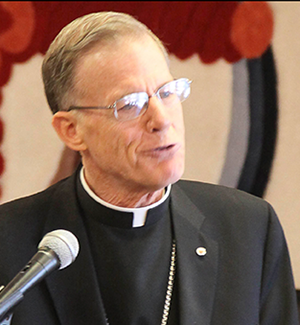 The runner-up in this year’s contest was Archbishop John Wester of Santa Fe, nominated for preaching the nuclear disarmament gospel in a religious context. His January 2022 pastoral letter reflects the Catholic Church’s long history of speaking out against the threats posed by nuclear weapons and calls on U.S. citizens to take “concrete steps toward abolishing nuclear weapons and ending the nuclear threat.”
The runner-up in this year’s contest was Archbishop John Wester of Santa Fe, nominated for preaching the nuclear disarmament gospel in a religious context. His January 2022 pastoral letter reflects the Catholic Church’s long history of speaking out against the threats posed by nuclear weapons and calls on U.S. citizens to take “concrete steps toward abolishing nuclear weapons and ending the nuclear threat.”
The December 2022 issue of Arms Control Today includes an interview with Wester by editor Carol Giacomo titled: “Making the Case That Nuclear Weapons Are Immoral.”
In a First, South Korea Declares Nuclear Weapons a Policy Option
“Mr. Yoon himself reiterated on Thursday that his country remained committed to the NPT, at least for now. He said on Wednesday — and his Defense Ministry reiterated on Thursday — that the more
“realistic means” of countering the North Korean threat would be through joint deterrence with the United States.”
BY CHOE SANG-HUN, THE NEW YORK TIMES | January 12, 2023 nytimes.com
President Yoon Suk Yeol said that if North Korea’s nuclear threat grows, his country may build a nuclear arsenal of its own or ask the United States to redeploy in the South.
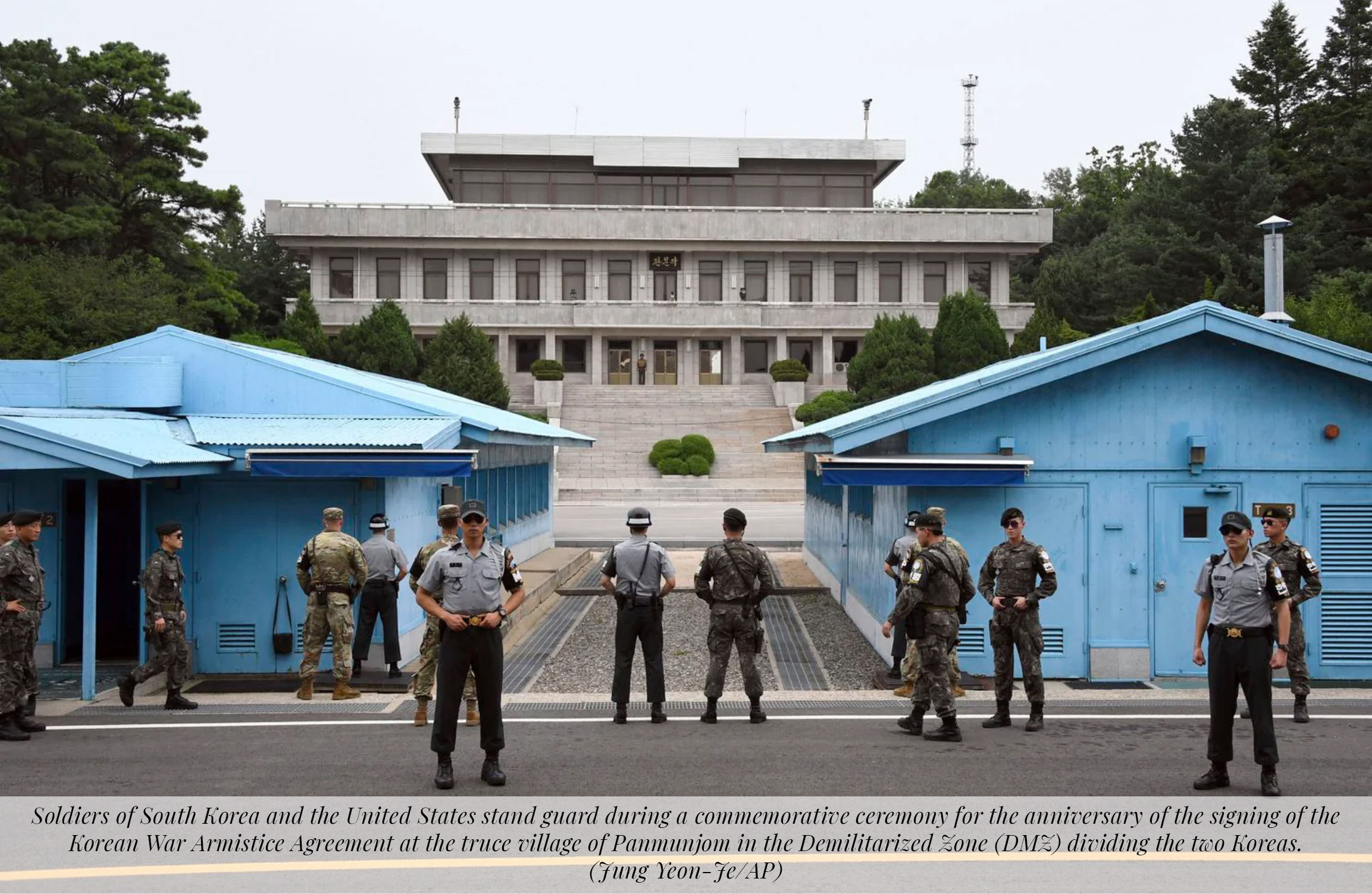
LANL waste contractor receives lowest score in its tenure, receives $7.16 million bonus
“It’s the lowest score on the lowest bar of so-called cleanup,” said Jay Coghlan, executive director of Nuclear Watch New Mexico. “I’m going to very much point my finger at the weak and defective 2016 consent order.”
Coghlan is among the critics who have bashed this cleanup agreement crafted under Republican Gov. Susana Martinez, saying it weakened the original 2005 order by eliminating real deadlines and imposing few penalties for slow or deficient work.
By Scott Wyland, The Santa Fe New Mexican | January 7, 2023 santafenewmexican.com
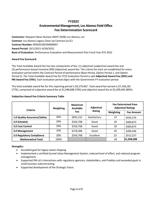 The contractor in charge of cleaning up Los Alamos National Laboratory’s legacy waste will receive the lowest percentage of its yearly bonus in its four years at the lab, mainly because of deficiencies in worker safety and packaging waste for shipping.
The contractor in charge of cleaning up Los Alamos National Laboratory’s legacy waste will receive the lowest percentage of its yearly bonus in its four years at the lab, mainly because of deficiencies in worker safety and packaging waste for shipping.
Newport News BWXT, commonly known as N3B, received 77% of its bonus fees for the year ending in October, the lowest since it began cleaning up the lab’s pre-1999 waste in 2018 and the first time the portion fell below 80%.
The U.S. Energy Department’s Environmental Management Field Office at Los Alamos issues the scorecards that determine how much of a bonus fee N3B will get in a given year under its $1.4 billion, 10-year contract for the cleanup work.
The contractor will be awarded about $7.16 million out of a possible $9.2 million, according to the 2022 scorecard.
CRITICAL EVENTS
Nothing Found
It seems we can’t find what you’re looking for. Perhaps searching can help.
ACTION ALERTS
Nothing Found
It seems we can’t find what you’re looking for. Perhaps searching can help.
Nothing Found
It seems we can’t find what you’re looking for. Perhaps searching can help.
New Nuclear Media: Art, Films, Books & More
Nothing Found
It seems we can’t find what you’re looking for. Perhaps searching can help.
Nothing Found
It seems we can’t find what you’re looking for. Perhaps searching can help.



















